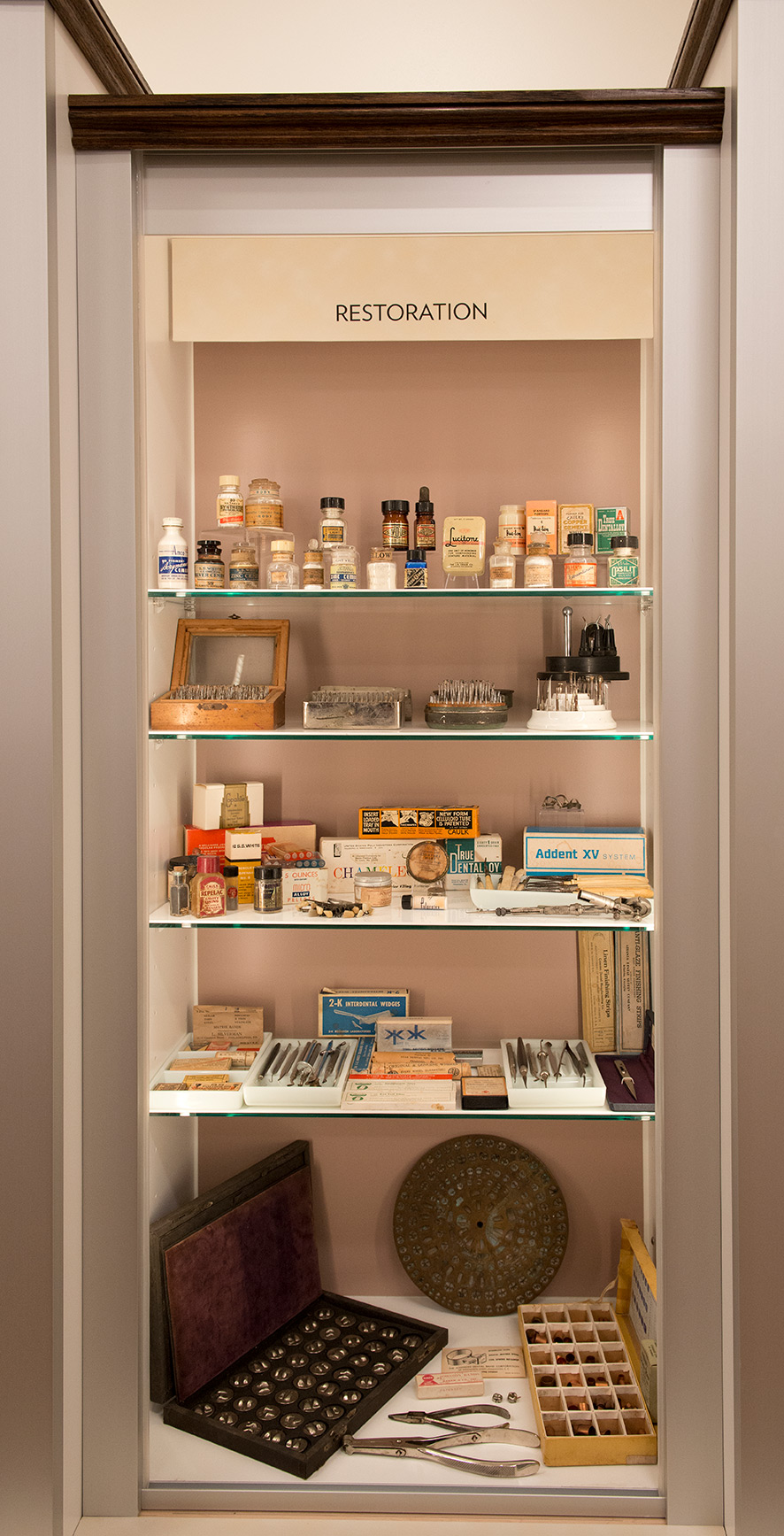

Sponsored by Susan and Stephen Wiggins in honor of Dr. Staci Gaffos
 Once dentists were better able to manage pain and control infection,
they developed techniques and procedures to preserve and restore their patients’ teeth rather than simply extract them. The field of restorative dentistry, as the name suggests, aims to restore the function, integrity,
and appearance of teeth that are damaged or diseased.
Once dentists were better able to manage pain and control infection,
they developed techniques and procedures to preserve and restore their patients’ teeth rather than simply extract them. The field of restorative dentistry, as the name suggests, aims to restore the function, integrity,
and appearance of teeth that are damaged or diseased.
There are two means for achieving this: the direct and indirect method. Using the direct method, the dentist applies materials such as gold, amalgams, or composites directly to the prepared tooth. In the indirect method, crowns, veneers, inlays, and onlays are made in a lab and later placed onto or over the tooth.
AMALGAM AND PORCELAIN
An amalgam is a mixture of mercury with other metals, which is then used to fill dental cavities. It has been used by dentists for over a hundred years because it is durable, long-lasting, and less expensive than other filling materials like gold foil.
However, amalgam does not look natural due to its silver coloring, and sometimes more tooth structure needs to be removed than with other methods. Gold or non-precious alloys may be used to make crowns or bridges. Either can be veneered with porcelains to match the color to remaining teeth.
An all-porcelain “jacket” crown was developed in 1889 and used during most of the 20th century. It was replaced with porcelain-fused-to-metal crowns which did not crack the way all-porcelain crowns did. Pre-polymerized composite resins are often used for single crowns.
COLOR
Shade guides are used to match the color of replacement teeth to the remaining natural teeth.
Ranging from bright white (now called “bleach white” because natural teeth cannot attain that color without intervention) to shades of yellow and grey, the shade guides assist the dentist in matching the color of remaining teeth.
GOLD
Gold is one of the oldest and most durable filling materials used in dental restoration. Examples of teeth with gold fillings have been found dating as early as the middle of the 19th century. Gold typically comes in sheets or pellets, which the dentist then applies to fill the cavity. Gold wire has also been used to ligate (or tie together) loose or replacement teeth to their neighbors. Gold is seldom used anymore in restorative dentistry because of the availability of less expensive and more easily applied alternatives.
INSTRUMENTS
In order to repair the offending tooth, the dentist prepares it by removing any decay or damage with a dental drill or burr.
Once the cavity is prepared, condensers are employed to fill the hole in the tooth with the filling material: amalgam, composite, gold, etc. Polishers or finishing strips are then used to contour and polish restorations. Using articulating paper, the dentist will check to see that the patient’s bite is properly aligned.
